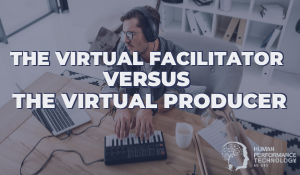10 Techniques Every Facilitator Should Know
Facilitation is both an art and a science, and at its core lies the principle of flexibility. For over 40 years, we have facilitated 1000s of workshops and can attest to the importance of adaptability. Participants and stakeholders come with varied perspectives, experiences, and expectations. A one-size-fits-all approach doesn’t always cut it. Flexibility ensures that facilitators can navigate diverse groups, objectives, and unexpected twists, crafting an environment where every voice is valued and objectives are met. We have put together this list of 10 time-tested facilitation techniques that every facilitator should have in their arsenal.
Below are 10 versatile facilitation techniques that every facilitator can keep in their back pocket to increase their flexibility:
1. Unconference
Description: A participant-driven approach where there's no predefined agenda. Instead, the attendees decide on the topics and structure at the beginning.
Benefits: Encourages spontaneity, participant ownership, and ensures relevancy.
Example Use Case: Ideal for open forum discussions or industry meet-ups where diverse topics can emerge.
2. World Café
Description: Participants rotate among several tables discussing a set topic, then gather to share main points.
Benefits: Diverse interactions, maximised participant engagement, and holistic discussions.
Example Use Case: Useful in community town-hall meetings to gather varied insights on local issues.
3. Fishbowl Dialogue
Description: A few participants discuss a topic in an inner circle while the larger group listens from an outer circle. Roles can switch to allow different voices in the discussion.
Benefits: Focused conversation with the opportunity for broad participation.
Example Use Case: Corporate strategy sessions where leadership discusses while employees provide feedback.
4. PESTEL Analysis
Description: Analytical tool that evaluates external factors affecting an organisation or situation—Political, Economic, Social, Technological, Environmental, and Legal.
Benefits: Comprehensive overview of external influences, driving strategic direction.
Example Use Case: Business strategy sessions evaluating market entry or potential risks.
5. The 5 Whys
Description: A problem-solving technique where you ask "Why?" successively to drill down to the root cause of a problem.
Benefits: Unearths underlying issues, promoting thorough solutions.
Example Use Case: Manufacturing settings to determine the root cause of a defect or production issue.
6. Dot Voting
Description: Participants are given dots (stickers) to vote on preferred ideas or options.
Benefits: Quick, visual decision-making and prioritisation.
Example Use Case: When refining a list of brainstormed project ideas to determine the most popular or feasible ones.
7. Brainwriting
Description: Participants write down ideas individually before sharing and iterating in a group.
Benefits: Ensures every voice is heard, which is especially beneficial for quieter, more reflective participants.
Example Use Case: Ideation sessions in product development or creative brainstorming.
8. Round-Robin
Description: Participants take turns sharing insights or feedback, ensuring all voices are heard.
Benefits: Equal participation and reduced dominance by louder voices.
Example Use Case: Feedback sessions at the end of a workshop or team-building activity.
9. Mind Mapping
Description: Visual representation of related ideas or concepts branching out from a central theme.
Benefits: Organised, visual structuring of complex ideas or plans.
Example Use Case: Planning content for a new course or visualising project timelines.
10. Parking Lot
Description: A designated space to "park" or list important but off-topic discussions to be addressed later.
Benefits: Keeps the session focused while ensuring key tangential points are not forgotten.
Example Use Case: Workshops with tight schedules where varied ideas and topics emerge, ensuring no valuable input is lost.
The beauty of facilitation lies in the interplay between structure and flexibility. While objectives guide our direction, the journey's path is often unpredictable. By arming oneself with a diverse set of techniques, facilitators can dance gracefully with unpredictability, creating sessions that are both productive and memorable. Flexibility isn't merely a skill; it's the essence of masterful facilitation.
Topics:
Facilitation Techniques
Trevor O'Sullivan
General Manager. Since the early 2000s, Trevor has worked with thousands of Talent Management professionals to develop and apply assessment-based talent management solutions for selecting, developing and managing people. Trevor is an active member of the TTI Success Insights (TTISI) Global Advisory Council, contributes to TTISI product development and is a regular presenter at TTISI-R3. He is honoured to have received multiple Blue Diamond Awards and, more recently, the Bill Brooks Impact Award recognising his contributions to the TTISI global network.



We Would Like to Hear From You (0 Comments)